
Unique gifting ideas for Christmas and new year to keep your customers happy
What better way to show your appreciation for your customers than to send them a customer appreciation gift on special occasions? Your competitors may try to win customers back with old “thank you” emails. You, on the other hand, can make a lasting impression.
The problem with gifts is deciding what to send. You cannot choose something that is too expensive or something that may be considered worthless. When choosing gift ideas, you must tread a fine line between cost and utility.
How to Market Using Gifts?
While the obvious goal of a customer appreciation gift is to show you care, it also serves another purpose: it promotes your online store. Customers should feel happy and appreciated, but it would also be nice if they recommended your store to their friends.
There are a few things to consider when using customer appreciation gifts as a marketing tactic.
1. Discounts vs. gifts
Using discounts and offers to increase sales is common practice in e-commerce. The question is how a discount compares to a gift in terms of marketing impact.
To answer this question, you must consider two factors:
- How frequently you offer discounts: The perceived value of a discount depends on how frequently you offer it. Customers may be uninterested in another discount, no matter how large, if you have frequent sales and offers.
- Value and terms of the discount: A steep discount with liberal terms may end up costing you more than a gift. Customers may be turned off if the discount is too small and the terms are too restrictive.
Surprisingly, consumer psychology research shows that people prefer to get more rather than spend less. A gift may have a higher perceived value because it provides more.
Of course, this only applies if you tell your customers you’re giving them a gift.
2. Explicit vs. Hidden Gifts
Should you inform customers about the gift or keep it a surprise for them?
Each approach has advantages and disadvantages. Informing customers ahead of time may persuade them to make a purchase, especially if they perceive the gift as a “deal.” Simultaneously, it deprives you of the customer delight that comes with a surprise gift.
What approach you take will be determined by your goals for the gift. Choose a surprise gift if your goal is to delight customers, build loyalty, and increase word of mouth (including social media).
If you want to use gifts as an incentive to buy more, tell customers about it right away.
3. Gifting to a Subset of Customers vs. Gifting to all Customers
Another conundrum is deciding who to gift – some customers or all of them?
The obvious disadvantage of gifting to everyone is the cost. You may not reap many benefits from gifting people who are inactive on social media or are unlikely to recommend you to their friends.
At the same time, only gifting a few customers may make them feel special at the expense of other customers. Customer B may be perplexed as to why Customer A received a gift while he did not. This can lead to resentment for your brand, which is the opposite of the purpose of gifting.
A better strategy would be to target your top 20% of customers. These are either customers who use social media or customers who fit your ideal customer profile. Because you want more of these customers, targeting them can produce better results.
Increase the Impact of Your Gifts
There are a few things you should keep in mind to get the most out of your customer appreciation gifts:
Customers are more likely to buy when there is a “mystery” involved in the purchase. Keeping the gift hidden can help in this situation.
Customers who receive something unexpected and free are more likely to shop again. As a result, it may be worthwhile to lose money upfront on a sale by making a gift. You can compensate by making additional purchases.
Giving away a freebie generates immediate word of mouth, especially if the gift is the customer’s first interaction with your brand. Thus, in addition to your top customers, you can target first-time buyers when giving away gifts to make a good first impression.
Concentrate on customers who are active on social media or have a history of sharing your products. Encourage them to post pictures of their gifts on their favorite social network.
Instead of giving a gift, consider donating to charity on behalf of the customer. According to research, charitable donations outperform practical gifts, especially when the original purchase was frivolous.
These are just a few ideas for making the most of your gifts. Your next task will be to choose the appropriate gift. We’ll go over some gift-selection guidelines below.
How to Choose Customer Appreciation Presents?
A customer appreciation gift is typically something physical, useful, and in some way related to your business. Its goal is straightforward: to thank customers for their patronage. The quality of the gift will determine whether it elicits a “wow” or an “eh.”
When choosing a customer appreciation gift, you must adhere to several guidelines:
1. It should have perceived value:
Above all, the gift should have perceived value. Even if it is inexpensive, it must meet a customer’s need or appear valuable to the customer.
2. It should be beneficial:
A good gift usually serves some practical purpose. Souvenirs and trinkets that serve no purpose are quickly forgotten. Every time the customer uses a useful gift, it will remind them of your company.
3. It should be simple to store and transport:
No customer wants to deal with an unwanted gift that takes up too much space in their home. You also don’t want to deal with the hassle of transporting a large gift. Always opt for something small and convenient to transport.
4. It should be long-lasting and durable:
A perishable or easily destroyed gift will quickly lose its value. Avoid fragile items or anything that could spoil in a few weeks.
5. It should be business-related:
An ideal gift is business-related in some way so that it reminds the customer of you. If you own a fashion store, choose a fashion accessory rather than a macroeconomics book.
Conclusion
Keep your customer personas in mind when choosing gifts. Consider: what would someone in this demographic enjoy? A cheap gift card to a discount store, for example, would not work if your target customers make more than $200,000 per year and live in a wealthy suburb.
Make demographics the focal point of your gift-selection process, and you’ll never go wrong.
We at RewardPort offer you an amazing number of rewards that your customers can redeem across multiple categories. MCOG (My Choice of Gift) is simple for your young users to use and tends to make a profit and redeeming points a breeze.

Step-by-Step Guide: How to Run a Facebook Sweepstakes
Running Facebook contests is a tried-and-true method of gaining likes, followers and creating thrill around a product or brand. It’s also a low-cost social media marketing strategy because you choose the budget and the prize.
A Facebook sweepstake is the simplest method for lead generation and growing your social media following. Facebook sweepstakes can help your business increase sales and spread brand awareness like wildfire.
Set Contest Objectives
A Facebook contest must have a clear goal to benefit your business. If your goal is to gain more followers, consider why. Why is that goal critical to your company? You’ll come up with a better goal every time you ask yourself this question. Continue until you have one that is in line with your business goals. You can begin with the following common Facebook contest objectives:
- Increase your following by 1,000 people
- Gather 1,000 email addresses
- Increase brand loyalty
- 10% increase in website traffic
- Increase brand awareness
Important: Make goals as measurable as possible. This is accomplished by substituting a number, such as “Get 200 new followers” for “Get new followers.”
One Facebook contest could potentially achieve all the above objectives. If you decide to go for all of them, try to prioritize the ones you believe are most important.
Select a Prize
Your Facebook contest prize should be exciting enough to entice your target customers to participate. When selecting a prize, keep the following in mind:
- Affordable and relevant prizes: A costly and irrelevant product may be unable to attract qualified leads or target audiences.
- Custom or limited-edition products: People enjoy receiving unique and special prizes, so consider offering a limited-edition prize or allowing the winner to select a design (color, engraving, etc.).
- Provide coaching sessions: Businesses in B22 can offer a one-on-one session with an expert, which is a great way to build a reputation.
- Combine multiple prizes into one: A prize package increases the appeal of the contest.
- Devise a prize that meets requirements: If you own a beauty store, give away a popular item such as a nail paint or makeup product. Online retailers can give away gift cards (allowing the winner to choose their prize) or a personalized item such as a bag or water bottle.
Select a Contest Type
A Facebook giveaway is the most straightforward type of contest, but it is not the only one. The best way is to determine your objectives. A photo contest, for example, may be better for increasing engagement, whereas a caption may be better for spreading brand awareness.
Popular contest types include:
- Sweepstakes: The winner is chosen at random (typically using services such as random.org).
- Photo competitions: Request that followers share a photo with you, either through private messages or on the brand’s page. The winner is selected by the community.
- Comment-to-win: Ask your followers to respond to a question in the comments, and the best one will win.
- Caption: The person who comes up with the funniest or most creative caption for a photo wins.
Rules for Writing a Contest
Inform prospective participants of your guidelines and requirements. The best method is to create a bullet list of rules.
Keep the following in mind when creating Facebook contest rules:
- Entry Rules: Describe the action required to enter your contest, such as making a purchase, leaving a comment on a Facebook post or blog article, and so on.
- Rights to public exposure: These rights are required to be able to announce the winner.
- Deadlines: Set the start and end dates for the contest.
- Laws: Every Facebook contest must abide by all federal, state, and local laws, as specified in the rule’s description.
- Process of determining the winner: Explain how you will choose the winner by listing the judging criteria.
- Prize. Describe the contest prizes for the winner, runner-up, and any additional contestants, if any.
Facebook algorithms and policies must be followed to ensure the success of your brand’s contest. Check the Facebook contest rules on the Policies page, for example, as there are a few specific rules for promotions. For example, Facebook prohibits requiring participants to “share the contest on your timeline.” That is why “share to enter” style contests are not advised.
Create a Contest Landing Page
A contest landing page is a website that promotes a contest and collects information from participants. Brands create landing pages to collect participants’ email addresses, communicate with them, and effectively promote the contest. The pages could be designed in a variety of styles, ranging from complex with videos to simple with a sign-up form.
Many landing page techniques are also used by online businesses to encourage participation.
A/B testing of contest landing pages is another way to collect valuable customer data.
You may discover that one type of marketing copy generates more engagement than others. For B2C and B2B businesses, A/B testing generates 25% and 40% more leads, respectively, so consider creating multiple landing page versions to find more effective marketing tactics.
Publicize and Market Your Contest
When you click the “Post” button, the campaign to promote your contest begins. Use all available channels, such as emails, blog articles, website pop-ups, chatbots, Facebook posts, advertisements, and so on.
Write a brief message announcing the contest and encouraging people to enter.
To publicize your Facebook contest, do the following:
- Explain the main prize (or add the photo)
- Make certain that the promotion emails include a link to the contest landing page (if applicable)
- Encourage your friends to enter the contest, friends and family recommendations are trusted by 81% of customers.
Participant Communication
A positive contest experience for all participants is critical for driving engagement and leaving a lasting impression. 71% of online customers who had a positive social media experience with a brand are likely to recommend it to others.
To make a pleasant experience for participants:
- Participate in the discussion by leaving comments.
- Send an email to everyone who participated, thanking them for their time.
- Your goal should be to contact each participant and express gratitude for their participation. Some online stores even send discount codes in exchange for entering.
Declare the Winner with all grace
Ways to congratulate the winner of your Facebook contest:
- Create a post in which you congratulate them
- Include them in an email newsletter
- Create a brief blog post
- Before announcing the results, try to get a “celebration photo” from the winner (ask them via email). It would be an excellent way to make a great announcement.
- Write that announcement in friendly and positive language; it’s a better way to communicate with customers than “legal style.”
Examine Contest Results
Approximately, 48% of marketers track brand-related metrics.
Facebook giveaway performance metrics can help you gain more customer insights and identify areas where you can experiment with ads and promotions.
That is why you should consider contest-related performance. Examine audience data to see who has been the most active and could thus be targeted with future marketing campaigns.
Conclusion
With RewardPort social sales strategies, you can run engagement campaigns on any social media platform. The key is to have an acute understanding of your customers and their interests.
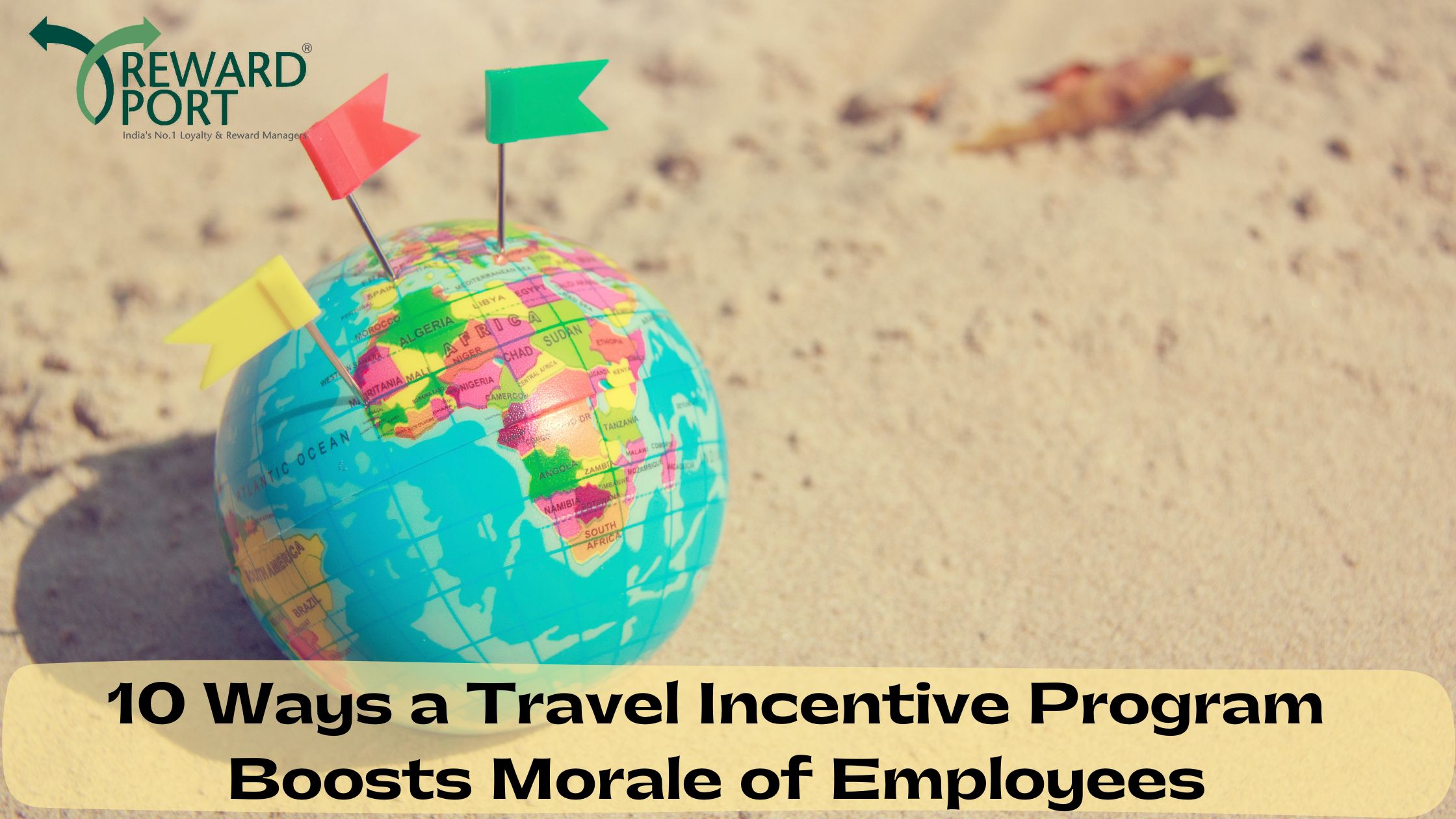
10 Ways a Travel Incentive Program Boosts Morale Of Employees
Incentives are used by successful organizations to reward and motivate employees, customers, and other stakeholders to engage in certain behaviors and avoid others. Incentive programs boost innovation and revenue while lowering losses and expenses and reinforcing corporate culture.
One study of incentive travel trends discovered a 22% improvement in performance after implementing a new program, increasing to 44-48% for programs in place for more than six months. Another study discovered that companies with effective incentive programs had 31% lower voluntary turnover.
Businesses invest in rewards such as cash, gift cards, trophies, recognition, time off, professional development, trendy merchandise, and the most prestigious award of all, leisure travel, to gain a competitive advantage in their markets.
1. Travel incentive programs have a huge impact
Organizations in the United States spend more than $100 billion per year on incentive rewards. The most common rewards across all programs are gift cards (71% of organizations), merchandise (38%), award points (36%), and travel (30%). Eighty per cent of programs use multiple types.
The top goals for sales programs are to increase overall revenue (80% of programs), boost morale (76%), and improve productivity (58%).
When many participants are earning rewards, cash and gift cards are used to reduce administration. When buzz is more important, trendy merchandise and leisure travel are used.
The ultimate reward is solo travel. Although travel can be difficult to manage, it has a huge impact that no one forgets. Celebrity Cruises offers individual cruise gift cards and certificates to relieve planners of much of the administrative burden.
2. Increase your value through word of mouth
The most powerful advantage of tangible noncash rewards over cash and cards is the recognition value.
Tangible awards are prominently displayed. Everyone knows who and how they got them. They create anticipation before the awarding, social media buzz during the awarding, and an afterglow that lasts long after the awarding.
Winners will extol a luxurious resort or cruise experience they had—and the organization that made it possible—to any willing listener.
Whereas, bragging about a cash prize is less than successful in spreading the word.
3. Increase your motivation by increasing your desire
Tangible rewards, such as those provided by incentive travel programs, take up more mental space than cash and cards, making them feel more desirable despite being of equal value.
The added value of these awards translates into measurable increases in recipients’ effort, perseverance, and performance. More emotional attachment results in greater behavioral change.
Performance in the first round was comparable in one field experiment that followed consecutive sales contests, with one cohort receiving cash and the other receiving prizes. However, in subsequent rounds, the median sales results from prizes rather than cash were significantly better.
In laboratory experiments, participants who received tangible rewards produced higher-quality work with fewer errors than those who received cash.
4. The reciprocity effect boosts productivity and creativity
While cash and credit cards are considered transactional, tangible rewards feel more like gifts and are more social. They lead to more emotional connections.
Noncash rewards, such as cruise vacations, elicit appreciation and a desire to return the favor. Employees seek ways to respond to emotionally impactful rewards by increasing productivity and creativity when they associate them with the organization that provides them.
Such a reciprocity effect lasts far beyond the transaction because recipients remember the gift more frequently and fondly than they would a cash reward, resulting in feelings of greater value by their organizations and more positive workplace behaviors like attendance and engagement.
5. Increase employee retention by expressing gratitude
People frequently put in more effort for no pay (a social market) than for little pay (a monetary market). Simply acknowledging someone’s good work creates a human connection, which can spark a transformation.
Employees who already make a good living are more motivated by managerial praise and one-on-one time with leaders than by cash incentives, stock options, or even pay raises. Those who are most satisfied at work say their managers are excellent at providing feedback and recognition.
In contrast, nearly 80% of employees who quit their jobs cite a lack of appreciation.
According to one large study of customer service employees, fair, consistent, and timely recognition by managers and peers significantly improved employee behavior and customer experience. Employee recognition was found to be the most effective form of reward by a similar study of managers, improving retention, communications, sales, customer satisfaction, and teamwork.
Members of Fortune magazine’s list of the 100 Best Companies to Work For having 50% lower turnover and a 15-25% higher return on investment than other companies in their industries.
6. Employees can be attracted with incentives and recognition
Rewards and recognition have an impact on a company’s ability to attract talent and meet customer goals such as satisfaction, loyalty, and profitability. With unemployment nearing historic lows, the best organizations recognize that competitive rewards and recognition help attract better employees.
Tangible noncash rewards have more value than cash because they have personal meaning. The best travel incentive programs are designed to ensure personalized recognition. The more recipients enjoy and remember incentives such as luxurious vacations, the more they promote their organizations.
7. Use a tiered approach to reward top performers
Top-performing companies leverage their rewards programs more effectively than average-performing companies. Top performers have sales of $100 million or more, revenue or stock growth of at least 5%, excellent customer ratings, and employee satisfaction of 90% or higher.
Over time, incentive program design has shifted from rewarding only truly exceptional employees (exclusivity) to ensuring that many high-performing employees feel appreciated (reach). When designing incentives, top organizations prioritize reach over exclusivity.
Celebrity travel certificates can be tiered to help planners tailor awards, appropriately rewarding different groups of high-performing employees.
8. Attract all types of employees
Incentive programs, particularly travel programs, must cater to the personalities and desires of their intended recipients. In this way, they also instill an organization’s culture, succeeding to the extent that they reflect that culture’s values.
Incentive programs, particularly travel programs, must cater to the personalities and desires of their intended recipients. In this way, they also instill an organization’s culture, succeeding to the extent that they reflect that culture’s values.
There are five broad categories of incentive travelers:
- Culture enthusiasts
- Trendsetters
- Travelers in gold
- Practical vacationers
- Vacationers are valued.
9. Give culture enthusiasts the authentic experiences they seek
These visitors are looking for in-depth experiences. They have intellectual personalities, value new technologies, enjoy fine dining and wine, and have a strong influence on their peers. They can use their travel vouchers to sail along the Arabian coast, visit Angkor Wat, or dive into the Great Barrier Reef.
10. Make the ideal getaway for trend-setters
Your best influencers are self-assured, younger, more affluent, and technologically savvy. They reserve the suite, go to the spa, and work out in the gym. Shore excursions that promise new travel experiences are popular among trendsetters. They can use their travel certificates to explore Alaska’s massive glaciers, Europe’s iconic cities, or the far-flung tip of South America.
Conclusion
While most people equate the advantages of incentive travel with performance before the trip, numerous positive effects occur after the trip. Once the project is completed or the goals have been met, your employees can go on the trip and enjoy a well-deserved break from work while relaxing and having fun with their coworkers in a stress-free environment.
This break will help to put some distance between completed work and upcoming tasks, enabling your employees to return invigorated and ready to come back motivated and prepared.
RewardPort can help your enterprise devise and execute employee rewards and redemption programs. While it is simple to use, it also provides a unique concept to keep them involved with your company.

Why Do You Need Digital Rewards for Channel Partners’ Program?
The world is becoming more digital. Digital has gained an influential position with consumers of almost all sorts whether it is business-to-consumer goods or business-to-business transactions. Businesses must embrace digital to keep up with the market trend and consumer growth. This includes not only posting their information online but also digital engagements in the form of rewards to aid in the success of their incentive programs.
What are Digital Rewards?
Digital rewards are incentives delivered via an encrypted link or QR code to motivate behavioral outcomes and increase engagement with a specific audience. Digital rewards provide incentive program managers with a variety of delivery transfer options as well as real-time reporting and analytics.
This type of reward is typically available instantly, is simple to use, and the redemption process is encrypted to ensure a secure transfer to the qualifying participants.
What is the purpose of a digital rewards platform?
A digital rewards platform is one way a company can adapt to the digital age. It differs significantly from traditional rewards marketing, which employs physical rewards such as vouchers or coupons. Physical rewards are limited in versatility and convenience, and they can be misplaced, torn, or lost.
A digital rewards platform improves customer retention as well. It provides a reason for customers to be loyal, and loyal customers are good news for any business because they spend up to 67% more than new customers. It even allows for referrals, as customers can be rewarded for telling a friend about your company.
When to Use Digital Rewards Platform?
Consider what your company could accomplish with a digital rewards platform. It is beneficial not only to cultivate customer loyalty, but also to anyone with whom your company is involved.
If your company has:
– Distributors located across the country, hundreds or thousands of kilometers apart, can be easily rewarded when they meet their targets.
– If you have a large number of branches or thousands of employees, you can instantly reward them on their birthday or working anniversary.
– With many clients spread across the country, you can reward the VIP client group.
Why Are Digital Rewards Beneficial?
Everyone in your channel partner incentive programs has one thing in common: they don’t want to wait to be rewarded. Your incentive program participants will have to wait, sometimes for several weeks, from the time they redeem their reward to the time they receive it. This is typically the case with merchandise, mailed prepaid cards, or checks.
Virtual gift cards and virtual prepaid cards do not have this issue. Considering the demographics of your channel partners you can choose the appropriate reward options for them with RewardPort. Few of the popular reward options are:
- VacPac for vacation packages
- AirPac for air travel benefits
- Sweepstakes with multi category rewards
- Cine Rewards
- Free Bucks for direct cash benefits
To offer digital rewards properly for your channel partner incentive programs or others, you will need a few things, including the right reward options, a good reward management system, and incentive management software.
How Can You Put Digital Rewards to Use?
Digital rewards are frequently used in incentive program schemes such as instant win games, sweepstakes, point accumulation, and code redemption programs. They are intended to persuade customers to perform an action or engage in a qualifying behavior. After completing the action, the participant receives points, a token/code to redeem in a game or a reward product. It’s straightforward and effective.
- Review participant engagement regularly to ensure that they are reaching their full potential
- Change the mechanisms for delivering rewards based on program and participant preferences
- Be careful not to appear spammy by being overly enthusiastic in communications and notifications
- Ascertain that your program has well-thought-out scripts and touchpoints
The rewards available through this digital process include name/brand gift cards, prepaid cards, merchandise, and experiential opportunities. The participant begins the process by receiving a text, email, or completing a scan or form. The digital component of the process connects the reward to simplified reward issuance and real-time reporting.
When it comes to engaging your participants, the possibilities for types of rewards associated with the digital process are limitless and working with the right technology provider ensures a frictionless redemption process. What incentives does your company have to offer?
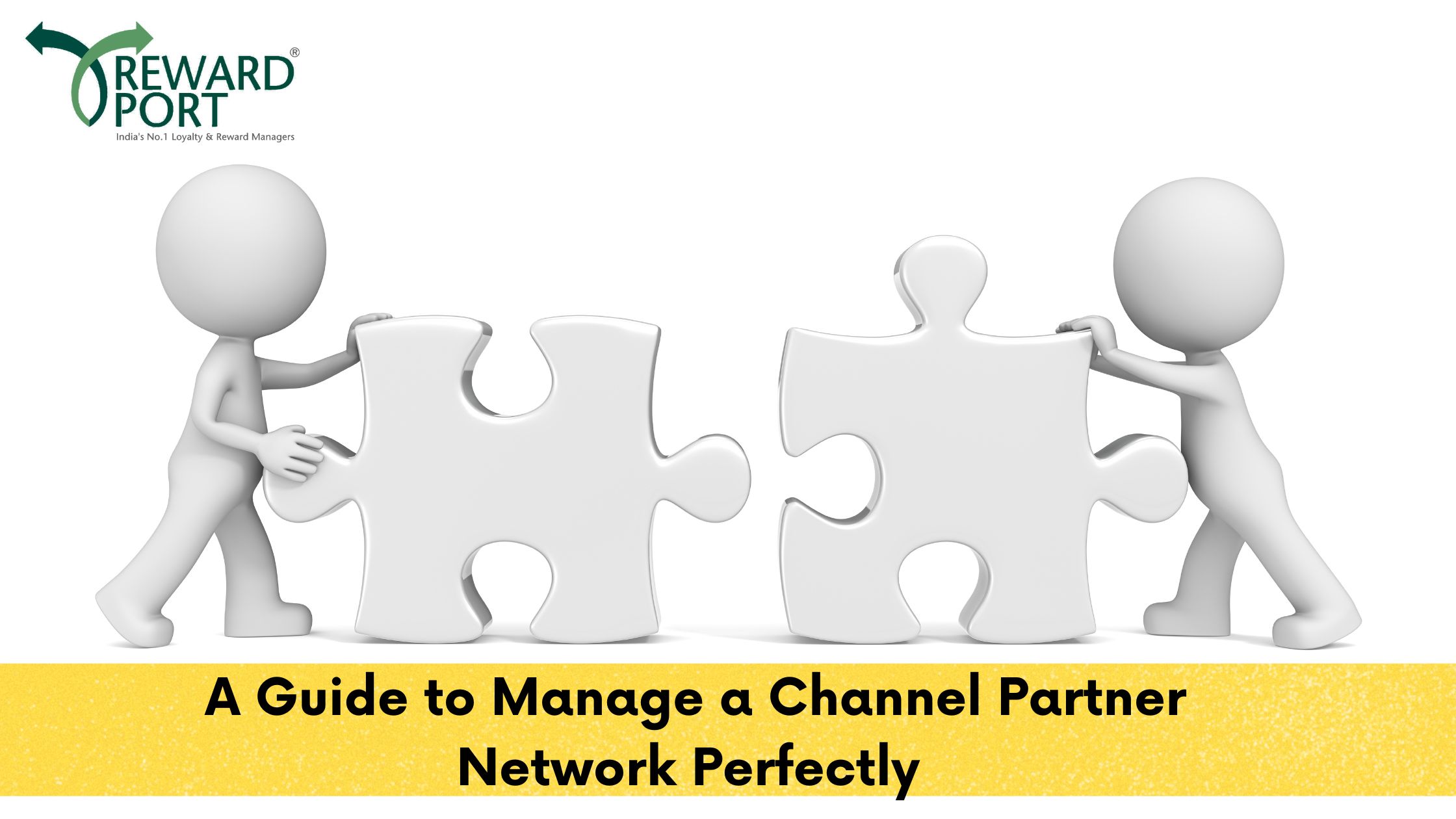
A Guide to Manage a Channel Partner Network Perfectly
A channel partner is a person or organization that collaborates with a manufacturer or producer to promote and sell their products, services, or technologies. Channel partners include a variety of organizations such as distributors, retailers, vendors, consultants, system integrators, technology deployment consultancies, managed service providers (MSPs), and value-added resellers (VARs).
To put it simply, a channel partner is a business-to-business (B2B) relationship in which a smaller company collaborates with a corporate manufacturer to market and sell its products, services, or technologies. Channel partners devote a significant amount of time and effort to developing personal relationships with their clients.
A channel partner can assist a manufacturer in bringing a new product to market, increasing brand visibility and sales. A channel partner enables businesses to enter new markets at a lower cost and with a lower risk factor.
Benefits of a Channel Partnership
A channel partnership can be advantageous to both the vendor and the partner. It is critical for vendors to select the right group of channel partners to maximize their returns on investment. Vendors can gain access to the partner’s existing customers through channel partnerships, increasing their sales exponentially.
The channel partner, on the other hand, can increase revenue by cross-selling a new product to its existing customers. They may even gain new customers who are interested in the new offering.
Look at some of the key advantages of channel partnership:
Access to a broad range of products and services
Channel partnerships enable partners to offer a wide range of new products and services from a variety of vendors. This enables channel partners to provide a diverse product portfolio to their customers to meet their specific business and technology needs.
Advantages of a Recognized Brand
Small businesses can benefit from large vendors’ established brands and reputations. Using established brands in sales and marketing materials lends immediate credibility to the channel partner’s reputation by allowing small businesses to convey to potential customers that the partner has a business relationship with a well-known manufacturer.
Additional knowledge and resources
The additional expertise and resources can benefit channel partners. They may be able to use a vendor’s human and financial resources, such as product and market training, technical support, MDF (Market Development Funds) or co-op funds, campaign templates, and other resources.
Leads
Many vendors continue to market their products and services on their own to generate leads, which they then pass on to channel partners for follow-up.
Amplified margins
Based on the number of products sold, additional discounts and revenue opportunities can be obtained.
A quick way to contact customers
Building channel partnerships is the quickest way for many manufacturers and vendors to gain market share and work with a partner who already has their target customers as customers. Channel partners spend a great deal of time and effort building personal relationships with their clients. Their recommendations on new products or services carry a lot of weight with customers.
Reduced sales costs
Establishing an indirect sales channel rather than employing an in-house sales team allows manufacturers to save money on employee salaries and benefits, as well as other expenses such as travel costs to visit prospects, time spent on unqualified leads that never convert to sales, and so on.
Gaining access to new markets
Several channel partners have a strong presence and reputation in specific market segments. This benefits manufacturers and vendors because their channel partners with deep knowledge of various industry verticals can deliver new customers in a fraction of the time and cost.
Methods for Managing a Channel Partner Network
Select the right partners:
It is critical for vendors to select the right channel partners to build a perfect channel partner network. To create an ideal partner profile, it is critical to focus on cultivating the right relationships. The question now is, who is your ideal channel partner? So, for each potential partner, you must ask the following questions:
- Are they prepared? Do they have the funds to invest in the collaboration?
- Do they want to? Will the collaboration help them achieve their objectives?
- Do they have the ability? Is there technical compatibility? Is there a skill match?
- Do we share the same values?
All these questions, along with some thorough research, can assist you in selecting the best channel partners.
Make introductions easier
It is critical to invest in relationships after defining goals and commitment. A dedicated resource, such as a partner manager, can facilitate team introductions and foster relationships. Knowing your partners can help you build trust with them. Furthermore, partners can provide valuable product feedback. Connecting with them for feedback can thus be extremely beneficial.
Enablement
Companies must empower their channel partners in a variety of key areas, such as technical training, building industry expertise, and sales training.
Technical education
Partners must be knowledgeable about your products. They must be able to use the product for free to understand what they are selling. Once the partners have been trained, ensure that they are kept up to date on the products. Also, give them timely access to new functionality. So that when it does hit the market, they will be experts from the start.
Industry Expertise
Sharing timely and important industry information with partners can give them a significant advantage over the competition. To do so, businesses must stay informed about what is happening in various industries, keep their eyes open, and inform their partners about the trends.
Sales Training
Because B2B tech partners are now selling to business leaders, a strong business training component is required in a partner enablement program. It is critical to provide appropriate consultation to partners on how to improve their businesses and establish new service offerings.
Conclusion
A channel partnership that is properly built and managed can undoubtedly yield fruitful results. Successful partner marketing programs can increase a brand’s visibility, ability to enter new markets, and overall sales.
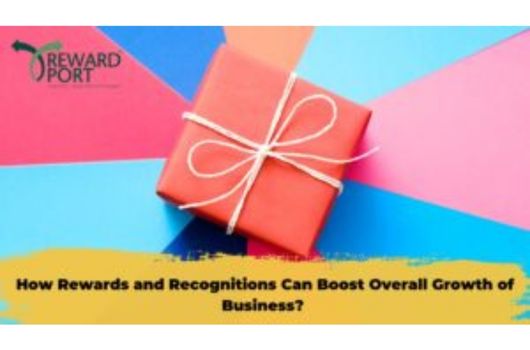
How Rewards and Recognitions Can Boost Overall Growth of Business?
People frequently discuss the employee-employer relationship and how it affects the job. The less discussed fact, however, is the employee’s relationship with the workplace, with colleagues, with the job itself, and so on. A professional relationship does not end with the employee being paid in monetary terms for the work and contributions they make to help the company achieve its goals. The workplace environment and how employees are treated for their contributions must determine the employee’s future, which directly impacts the company’s future and success.
In short, an employee expects more than just money from their job; they expect to be recognized for their talents and skills as an employee reward. For any employee, salary day is the happiest day of the month. However, the success of a company is dependent on how happy and motivated the employee remains for the rest of the day. A solution would be a systematic approach to this need for employee recognition through a reward-based system, thereby highlighting an employee’s exclusive efforts put in for the organization.
Why start a program of rewards and recognitions?
Implementing a rewards and recognition program increases employee engagement, which leads to numerous benefits for the company, such as increased productivity and retention. According to one survey, the most effective way for a manager or company to motivate employees to produce excellent work is through personal recognition.
Recognition programs are effective because they focus on the positives, sending a clear message to employees that what they do matters. Rewarding excellent performance and success with items that your employees’ desire will keep them focused and motivated to do better. These programs encourage employees to set and achieve goals on a daily, weekly, quarterly, and annual basis.
• Corporate culture
Recognition that is frequent and timely has a significant impact on the company’s culture. A company’s culture is the amalgamation of its vision, goals, and ideologies for the greater good. An appreciative workplace culture fosters trust and respect among employees. Employees are allowed to learn about and praise the strengths and unique qualities of their coworkers.
• Boost employee motivation
Recognizing and rewarding employee performance will increase motivation and help employees stay on track and maintain a positive attitude. These programs promote collaboration and provide employees to strive for. When they are rewarded for doing something right, they are more likely to do it again and again.
• Show your gratitude
Employee satisfaction is impossible to achieve unless you show your teams how much you value what they do. By recognizing victories, you send a clear message that they are important to you and the company. This makes employees feel seen, heard, and valued, all of which are necessary for job satisfaction. Employees who are appreciated are happy employees who want to work hard to help the company grow and succeed.
• Encourage healthy competition
Employees’ feelings of friendly rivalry are aided by reward programs. Workers will begin to compare their performance to that of their coworkers and strive to do better the next time. When they reach the top of the list, they will feel accomplished, and everyone on the team will want to be there as well. Communicating one person’s or team’s success to the entire company raises awareness and encourages employees to give it their all.
• Increase productivity
Employees are more engaged at work when their accomplishments are acknowledged, either verbally or with a monetary reward. Teams of workers who are attempting to achieve goals are more productive because they become more efficient with their efforts and energy to meet those objectives and see actual results.
Employees who are more invested in their work and take pride in it are more likely to take a grip on their tasks and finish them on time. When they are evaluated against other workers or progressing toward a reward, they will ensure that the work is of high quality.
• Increase employee retention
Employees who are happy and engaged are more likely to stay. According to one survey of HR professionals, 68% believe that their recognition programs have a positive impact on employee retention. Employees want to work for companies that value them and demonstrate their appreciation through tangible actions. Incorporating rewards and recognition is the type of action that will keep more employees, contributing to the company’s long-term success and growth.
• Company branding
Strong employee branding has become strategically important in today’s competitive world. Effective employee branding attracts the right candidate while also promoting positivity and employee engagement. Building a strong brand identity requires recognition.
When employees feel valued at work, they become active supporters of the company and its products. They engage in positive word-of-mouth promotion on their own. Because of the massive surge in popularity and engagement on various social media sites, they have now emerged as the primary platform for company recognition and promotion. Recognizing good relationships fosters a positive work environment and, as a result, increases employee advocacy.
Conclusion
To summarize, employee recognition affects the bottom line of any business. It results in higher retention rates, increased productivity, and increased self-esteem. Engaging experts like RewardPort to design and execute rewards programs for your staff can help you with the following benefits:
- Implement a consistent program
- Significantly faster outcomes
- Improved client/customer relationships through improved teamwork
The ongoing effort will soon permeate all aspects of your company. As a result, employees will be happier and more productive. Taking the time to thank your employees will ensure that you reap the benefits in the long run.

Brand Loyalty in Modern Marketing: Ways to Improve It and Retain Customers
As an entrepreneur or marketer, you are probably intrigued by some brands that have a cult-like following. Their customers remain loyal to them for nearly a lifetime and make repeat purchases whenever they require that specific product or service, regardless of price. Such brands can be found in every industry and come in a variety of sizes and shapes.
Value of Brand Loyalty
Brand loyalty has proven to be extremely important in creating iconic brands and retaining customers for an extended period, even a lifetime.
The following points emphasize the significance of brand loyalty for any type of business:
• Lower acquisition costs
You must be aware that the cost of acquiring a new customer is five to seven times that of retaining an existing one. This is where brand loyalty comes in handy. An effective brand loyalty program can lower the cost of acquiring new customers by keeping existing customers loyal and enticing them to make repeat purchases.
• Retargeting and remarketing made simple
According to one recent study, businesses are only 5 to 20% likely to sell their products or services to a new prospect while they are 60 to 70% likely to sell to an existing customer.
• Increased customer trust
Customers have exceptional trust in successful brand loyalty programs because they focus on delighting and exceeding their expectations every time. This gives them a significant competitive advantage and allows them to charge a higher price for their products and services than their competitors. Despite charging a premium, they retain most of their customers and receive consistent repeat purchases.
Top Ways to Increase Brand Loyalty
Before making a purchase, modern customers scour websites and research the products they intend to purchase.
You can’t rely on traditional methods to generate loyalty when customers are 60% to 80% of the way down the funnel before speaking with anyone at your company.
At the same time, fewer customers remain loyal to a single brand.
Loyal customers are profitable customers because they are less expensive to market as they purchase more frequently. However, only 27% of initial sales become repeat customers. Companies must invest in cultivating customer loyalty.
• Begin with your employees
If you want satisfied customers, start with your employees. Customers notice and feel it when they are appreciated, valued, and included. Call your boss and co-workers. Inquire how they are doing and what you can do to assist them. Be adaptable. Be adaptable. Make communications more personal. Employees will then pass it on even if their boss is not looking! Loyalty spreads like wildfire.
• Maintain Contact Between Projects
Maintain contact with current and former customers in between projects. Customers can stay informed about your service offerings by receiving a client-focused newsletter regularly. When comparing the cost per new lead versus the cost of retention, a client discount is also a great incentive and a justified expense.
• Connectivity and functionality should be combined
The combination of brand functionality and emotional connectivity is redefining brand loyalty. Products and services must not only solve a problem but also reflect the views and preferences of the customer. Marketers who strike this balance will build stronger, more intimate relationships with brand ambassadors.
• Engage your customers
Connecting with your users aids in the development of a sense of belonging and community. To get your users excited and engaged, share your brand’s new and exciting developments, as well as news and opinions in your industry.
You can use social media to inform customers about new trends, special deals and discounts, and your company’s next steps. The more like a conversation it feels, the better.
Another way to keep your existing customers happy is to recognize their needs before they even realize they have them. Predict what your customers are likely to want using your customer behavior data, and then provide it to them.
A simple Thank You note, Happy Birthday or Happy Holidays greeting will also go a long way. Customers in any industry want to know that you care about them outside of business transactions.
• Personalize programs
When it comes to brand loyalty programs, there are numerous reward and incentive options available to keep your customers engaged and loyal. Most successful brands use a variety of options, including points programs, hybrid loyalty programs, tiered programs, fee-based loyalty programs, and others. Using a variety of loyalty programs can be extremely appealing and valuable to various customers.
• Create a distinct brand position
Nothing beats your company’s distinct brand position when it comes to increasing brand loyalty. Unique brand statements are created by strong brands to highlight their brand values, unique selling propositions (USPs), and market position.
A distinct brand position communicates what distinguishes your company and the value it adds to the lives of your customers. Create a distinct brand position that resonates with your target customers. Determine what distinguishes you from your competitors and list the strongest points of your brand that distinguishes it from the competition.
• Channel sales partners should be rewarded
The comprehensive and multi-pronged nature of the brand loyalty program is its best feature. Working with the right channel sales partners and providing them with appropriate rewards and incentives is one of the most effective ways to boost your brand equity.
A brand can benefit greatly from collaborating with the right channel partners and creating personalized and tailored rewards for them. It will encourage channel partners to prioritize one brand over others, thereby improving brand identity and equity.
Appropriately rewarding channel partners create a virtuous cycle that tends to pass the benefits on to the end customers.
• Increase loyalty by using reciprocity
Reciprocity is a social construct proven to increase loyalty. Kindness creates a sense of obligation in the recipient, who instinctively wants to repay the kindness.
There are two types of reciprocity, and both can be used to increase customer loyalty to customer service.
A surprise gift or gesture is surprise reciprocity. For example, if you send your customer free swag or tickets to a company event without warning.
Trumpeted reciprocity occurs when someone gives or does something beneficial in a way that demonstrates that they are going above and beyond. It doesn’t mean you have to document and report on everything you do, but it should be clear to the customer that what you’re doing is outside the normal scope of the working relationship. Giving your customer early access to a new product or feature is an example of this.
Conclusion
Loyalty marketing is critical for building long-term relationships with customers who spend more money with you. With loyalty scheme members generating 12 to 18% more revenue per year than the average guest shopper, it’s no surprise that loyalty marketing is so popular among brands.

The Impact of Loyalty Programs: Pros and Cons
Loyalty programs are designed to reward your most valuable customers. Businesses choose to implement a rewards program to retain current customers and convert new buyers into loyal customers. Traditionally, many businesses use rewards programs such as rebate programs, cashback, earning points, and others to incentivize customers to make purchases.
What is a Loyalty Program?
The most basic definition of a loyalty program is that converting customers into brand loyalists necessitates a repeatable process that incentivizes them to continue purchasing from you. Loyalty membership is essentially the process of rewarding customers for their frequent or ongoing engagement with your brand through structured marketing strategies.
They receive more rewards as they spend more. Customers will feel good about purchasing from you if you put customer preferences at the heart of your marketing efforts and execute a program well, giving your business a competitive edge over your competitors.

Why Are Loyalty Programs Necessary?
Loyalty programs were created when businesses realized that the competitive advantage, they once had due to product differentiation was no longer valid due to the proliferation of similar looking and “me too” products. Having loyal customers became more important and difficult in such an environment.
Advantages of Loyalty Programs
Loyalty programs became popular because they offered businesses a way to maximize their customers’ lifetime value, along with the following advantages:
1. Retention of Customers
A loyalty program’s primary goal is to retain customers by rewarding them for repeat purchase behavior. According to Khan and Khan, “loyalty exists when a person regularly patronizes a specific (store or non-store) that he or she knows, likes, and trusts.” In short, a customer loyalty program is a tool for retaining customers by providing them with a compelling reason to return to the company and establishing habits.
Many studies have been conducted to explain the relationship between loyalty programs and retention rates. According to one European study, customers’ relationship perception of a loyalty program offered by a Dutch financial services company explained about 10% of the total variation in customer retention and customer share.
Customer retention strategies have a well-established direct impact on the bottom line of a business. A company with a 60% customer retention rate loses three to four times as many customers as a company with an 80% retention rate.
2. Customer Information and Consumer Trends
When a customer registers for a loyalty program, their information is saved in the company’s database. Companies can use this data to segment their omnichannel, offline, and e-commerce customers, profile their best customers and tailor their offerings to specific groups of consumers.
Because loyalty program data provide a comprehensive picture of customer behavior, purchasing habits, and preferences, the company can use it to improve inventory management, pricing, and promotional planning. This information also allows marketers to assess the effectiveness of special promotions based on additional purchases, the use of additional channels, or a shorter time between purchases.
3. Increased Cart Value
Data collected by a company can be used to cross-sell and up-sell. It can provide extended warranties after a purchase, recommend accessories that complement the purchased item, and provide discounts on related purchases. Furthermore, the loyalty program can provide relief by increasing demand during slow seasons.
The best example is an airline mileage program that is only available on certain flights. Because there are less wastage, such targeted promotions are more likely to produce satisfactory results.
4. Getting Rid of Unprofitable Customers
One of the less frequently mentioned benefits of loyalty cards and programs is that they allow businesses to shed excess weight. A well-designed loyalty program enables businesses to segment their customers and identify profitable and unprofitable customers. It assists them in dropping customers who only buy discounted lines and avoid the premium range regularly. These customer profiles may end up costing more than they generate.
5. Improved Customer Communication
A loyalty program provides a direct line of communication with customers, making interactions much easier. Aside from promoting sales and announcing new products/services, a useful item on this list of the benefits and drawbacks of loyalty programs is that they facilitate recalls when necessary. This is possible due to the recalled items’ purchase date and barcode. Because it is based on the consumer’s actual purchase of the affected good, the recall notice gains weight and significance. In comparison to a store sign or newspaper notice, this email-borne recall notice has a high chance of being read by the public.
Disadvantages of Loyalty Programs
Loyalty programs have not always worked the way businesses aimed them to. Here are a few disadvantages you should hedge against while using a loyalty program.
1. Loyalty Behavior Is Difficult to Assess
It is extremely difficult for the loyalty framework to break free from the transactional spirit. A frequent buyer appears to be a loyal customer often. However, this may not be the case, as he may be purchasing from the company simply because it is convenient for him. Or he may be purchased solely for the benefits provided by the loyalty program in the form of rewards. As a result, loyalty, which is essentially an emotion, may not be measured by the loyalty program.
2. Keeping the Bottom Line in Check
The financial aspect of loyalty programs is the most stressful of all the benefits and drawbacks. Discounts, in any form, are detrimental to a company’s bottom line. A typical $50 sale transaction has a cost of $40 and a profit of $10. A 5% loyalty discount—$5 off a $50 sale—reduces profits by 50%. The costs remain constant, but instead of earning $10 on each sale, the profit is reduced to $5. What appears to be a minor discount (in this case, 5%) can have a significant impact on profits.
The key to overcoming this financial setback is to ensure that your loyalty program is reasonably priced and effective. If the program is truly increasing repeat purchases and average order value, you should have no trouble recouping your losses if your discounts are balanced.
3. Saturation of the Market
Loyalty programs, like products, are ubiquitous and may appear identical. They are all similar in terms of membership requirements, purchase requirements, and benefits. However, in today’s ultra-competitive world, businesses are unable to back out of their loyalty program commitments due to the fear of lost sales.
With the average household participating in over nine reward programs, businesses must develop programs that are distinct and distinguishable. However, creating a loyalty program based on a sustainable competitive advantage that cannot be replicated is extremely difficult. However, advocate loyalty programs are a good way to stand out because you can reward customers for doing things that are unique to your audience.
4. Profitability Variability
Based on past customer behavior, loyalty programs hope to increase repurchases. However, their incomes, needs, and lifestyles change over time. Naturally, their purchasing habits shift. People prefer to avoid the traditional loyalty program. According to a Maritz poll, four out of every ten loyalty program participants left at least one program. That is why some experts are understandably skeptical of loyalty measures such as RFM (Recency, Frequency, and Monetary Value). RFM is a useful tool for measuring customer loyalty, but it is far from perfect.
5. Loyalty Data Limitations
Because loyalty data excludes purchases from other brands and stores, it provides a skewed picture of consumers’ overall purchasing behavior. Data from customer panels may also be more representative than data from loyalty card members. Furthermore, customers may be offended if they are uncomfortable sharing sensitive information to receive the program’s incentives.
However, this point on the list of the benefits and drawbacks of loyalty programs can be addressed by incentivizing customers to share their other purchase data by rewarding them for submitting third-party receipts to you. You can gather this information to reward them for their purchases of your goods while also processing the receipts for additional information, whether they do so by scanning physical receipts or forwarding e-receipts.
Conclusion
Nobody can deny the value of loyal customers. The point of contention is the loyalty program’s ability to generate more loyal customers. This is because not all loyalty programs are successful. Some have failed due to their undifferentiated appeal, while others have failed due to poor implementation. Some have also failed because of incorrect value propositions.
Understanding the benefits and drawbacks of loyalty programs will aid in avoiding such errors.

10 Sales Incentive Programs to keep your Team Effective and Efficient
Why is sales incentive important?
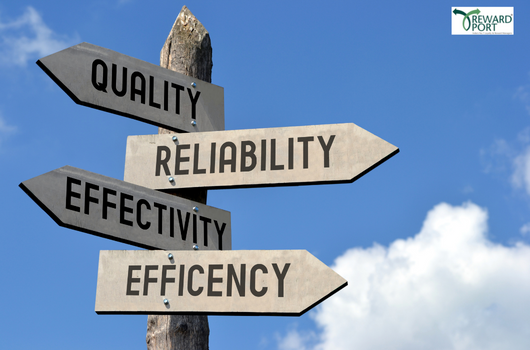
To increase sales, you must have a sales team that is motivated and engaged in their work. Maintaining the motivation of your sales team is a year-round process. As a sales leader, you must constantly come up with new ways to motivate your team. Whether you’re trying to get your reps to close a quarter strong or kick off a new fiscal year, keeping reps engaged is critical to meeting your goals. Sales incentives are an excellent way to boost employee morale.
What exactly are Sales Incentives?
A sales incentive is a reward given to sales professionals by their employers for successfully selling a certain number of products or service hours. Sales incentives can be monetary, physical, experience-based, or any other type of incentive that is tailored to the interests and motivations of the employees.
Sales incentives differ from sales compensation in that compensation is typically in the form of a commission, which sales professionals typically earn in addition to their regular salary. Instead, sales incentives are rewards intended to provide recognition for exceeding expectations, meeting objectives, and contributing to an organization’s overall success.
When should companies use sales incentives?
When sales professionals meet specific sales objectives, many companies incorporate sales incentives as regular reward program (such as selling a certain number of products or meeting a certain amount in sales revenue). Furthermore, businesses will use sales incentive plans to motivate and engage employees, resulting in increased productivity and effort to meet objectives.
Benefits of Using Sales Incentives
Implementing a sales incentive plan has several significant advantages, including:
1. Enhanced team productivity
A system of rewards for consistently meeting or exceeding team sales goals or expectations can be extremely effective in increasing productivity. As sales teams work toward these objectives, they will gain new and valuable skills. With sales incentives in place, your team will be able to collaborate while also improving their job performance.
2. Increased levels of participation
Incentives can also be used to increase your team’s engagement in their work. Setting team objectives that result in recognition and rewards for the entire sales team, for example, can increase engagement in collaboration, strategizing, and implementing sales techniques.
3. Increased job satisfaction
Incentives that recognize team effort and success will naturally increase your team’s overall job satisfaction. Employees will value their work if they know their managers recognize their contributions, which leads to increased productivity and performance.
4. Increased team collaboration
Increased team productivity, performance, and sales development can lead to an overall improvement in how your team works together. Providing incentives for the entire team rather than implementing a single reward for an individual results in a team-wide improvement effort. They will be more likely to recognize each other’s contributions, find creative solutions to problems, and implement creative strategies that will ultimately help the company meet its sales goals.
5. Improved team morale
Teams will be more likely to have an upbeat and positive attitude in the workplace if they improve their collaboration efforts, increase their productivity, and feel recognized for their work. This boost in team morale is critical for completing meaningful work, meeting objectives, and adding value to the organization as a whole. Employees who are satisfied and content are also more likely to be highly supportive of their teammates in achieving goals rather than focusing solely on their own needs.
10 Growth-Boosting Sales Incentives
1. Cash
Most businesses keep cold hard cash as a reward for the sales team’s efforts. This is the most common type of sales incentive that can never fail because everyone works to earn money. If you are a sales manager, you can keep a set amount of money as a bonus for meeting a specific sales target or closing more deals.
2. Gift Cert
A gift card is a good option if you want to provide a non-cash reward. Gift cards are extremely useful to employees now that the majority of people shop online.
3. Vouchers for Travel
Every employee follows the same routine of coming to work every day. If you want to break up the monotony, you can provide your employees with travel vouchers. Your employees will always look forward to such rewards, whether they are hotel vouchers, airline tickets, cruises, or travel points. Offering such sales incentives would motivate employees to work harder.
4. Boxes of Subscriptions
These days, personalized products are the new trend. That is why subscription boxes are becoming increasingly popular. This is the best option for your sales team these days because they can easily find what they need while remaining safe.
5. A gym membership
Getting a gym membership can be costly, and people may abandon their plans as a result. What you can do is give your sales team a membership to a well-known gym that he has always wanted. You can provide any membership to your team as a sales incentive, whether it is Yoga, cross-fit gyms, or aerobic classes, based on their interests. It would improve your sales team’s productivity and provide a work-life balance.
6. Courses in Online Learning
A subscription to online learning courses related to the industry in which your employees work is one of the best sales incentives you can offer them. This would not only broaden their knowledge base but would also aid in their personal career development. You can offer workshops, sales courses, English classes, online college courses, professional courses taught by industry experts, and a variety of other services. Employees’ personal development will benefit from these online learning courses.
7. Extensive Dining Experience
Isn’t it true that we all look forward to a fancy, exquisite dinner at some point in our lives? Giving your sales team a fine dining experience will fulfil their primary desires. You can give your employees the option of selecting from a variety of fine dining restaurants and hotels. This would give your employees the best experience while enjoying delicious food with their families.
8. Product Awards
Using physical products as prizes is a novel way to motivate your employees. You can sell iPhones, smartwatches, Bluetooth earphones, tablets, and other electronic devices. Employees can also be provided with household items such as a coffeemaker, food processor, and so on. According to the interests of your sales employees, you can also offer hobby products such as musical instruments, rock-climbing equipment, and so on. These product prizes can be a good option because they help to relieve the stress of winning repeatedly.
9. Office Additions or Modifications
The best option is to provide office upgrades. Whether it’s a good chair, a good table, a dual monitor system, or noise-cancelling headphones. This would serve two purposes: first, it would be a fantastic sales incentive, and second, it would increase the efficiency of your sales team.
10. Employees’ Preference
Everyone has different tastes, hobbies, and preferences. Instead of providing one type of sales incentive to each employee, you can select a prize for each employee based on their personal preferences. All you have to do is set a budget and allow employees to choose their own incentive based on their own interests. They will feel more motivated and perform better as a result, increasing sales revenue for your company.
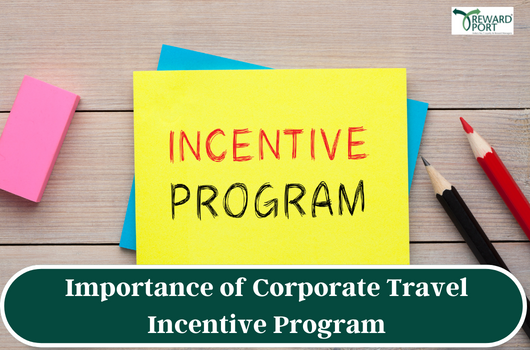
Importance of Corporate Travel Incentive Program

Incentive awards signal recognition of good performance from employees, which leads to more of the same behavior in the future. A well-planned incentive travel program connects business objectives to personal motivations and aspirations. Eligible program participants are motivated to achieve their objectives for the benefit of both the company and themselves. With challenging but achievable goals, incentive planners must design program that are more meaningful, motivating, and memorable.
The incentive program must be carefully planned so that participants can enjoy activities from start to finish and return to work with high motivation and productivity.
What basically is a corporate travel incentive programme?
Every employee deserves to be recognized by the company for their efforts. Offering cash incentives to employees, on the other hand, appears to be a thing of the past.
A business travel incentive programme is a type of incentive structure in which top-performing employees or teams are given all-inclusive paid trips as a token of appreciation for their efforts.
An effective business travel incentive program adds a personal touch to employee rewards, providing employees with memories to last a lifetime. It is a one-of-a-kind way to show your appreciation to your employees.

How can a company create an effective business travel incentive program?
Businesses can benefit from keeping employees motivated while they work because they are more likely to be constructive and produce a higher work output. Many businesses use incentive program to motivate their employees to complete tasks in exchange for rewards and recognition.
The following are the steps you can take when developing and implementing an employee incentive program:
1. Include the appropriate individuals
Before you start planning an incentive program, meet with the people who will help you strategize and implement it. Members of the management team and volunteers from the finance and HR departments are frequently included. You can work together to make decisions about why the company wants to implement the program and how much money the company can allot for incentives.
2. Set program objectives
Set parameters with the team for what goals the company wants employees to achieve in order to qualify for the incentives. Create simple, specific, and measurable goals, such as increased sales or improved attendance. Choose up to three goals for employees to strive for after discussing the options.
3. Determine the incentive audience
Consider who you want to reward so you can decide who will participate in your programme. For example, if you set a goal of “increase sales by 10%,” only members of the sales team will benefit from it. Establishing your target audience can help you determine the types of incentives that will motivate them to achieve your goals.
4. Increase participant participation
Before deciding on programme rewards, ask some participants what would motivate them the most. You can also solicit their feedback on potential rules or steps involved in achieving the goals. This can increase employee engagement and overall interest and involvement in the programme.
5. Assess the incentive program’s success
Take time after the program has ended to assess its effectiveness. Determine whether it met the program’s objectives. Based on the data, you can determine whether the program motivated employees to participate and work toward your desired goal. Assessing various elements can assist your team in developing parameters for the next incentive program and deciding which components to include.
What perks do corporate travel incentive programmes offer?
Corporate travel incentive program are inexpensive ways to reward top performers. They help the company by promoting revenue growth, customer acquisition, and sales growth.
1. Improves motivation and cooperation
Travel incentives are a fantastic way to show your appreciation for your employees and give them well-deserved credit for their efforts. They can inspire and foster idea-sharing as others seek to emulate the success of top performers, in addition to increasing employee motivation. As teams work together to win the prize, impressive incentives can improve communication and collaboration.
2. Excellent incentives lead to increased job satisfaction and employee retention
Having goals to strive for and being recognized for our efforts is critical to our sense of purpose. It can make our work less repetitive and increase our satisfaction with our role within a company. Linking targets to a fantastic prize is a tangible way to show appreciation for your employees’ efforts and is a perk they will be reluctant to give up.
3. Envy-inducing benefits make it easier to recruit qualified candidates
When looking for a new job, savvy candidates will carefully consider the advantages of choosing your company over a competitor. There are numerous opportunities for a potential candidate to evaluate your organization’s company culture in the age of social media and sites like Glassdoor. Sharing inspiring images from your corporate travel incentives is a sure way to attract qualified candidates.
4. It provides you with a competitive advantage
Managers now have a new way to assess the productivity of their teams thanks to an incentive travel program. Perhaps a team will meet their goal earlier than last year to ensure their spot on the getaway, generating a slew of new statistics to impress current and prospective clients alike. A company that is ambitious is always appealing. Seeing your team’s desire for success is contagious, and it may tip the scales in your favor.
Why is incentive travel such an important part of running a successful business?
Incentive travel is a tool for stimulating employees with an activity designed and planned to motivate and reward employees who have met certain company goals. Its goal is to strengthen the team and foster a unique environment in order to boost both the team’s and the company’s performance.
- Healthy Competition Incentives instils a sense of healthy competition in employees. In order to earn their incentive, they strive to work harder and better.
- Travel is an extremely cost-effective incentive. In fact, it is far superior to providing monetary incentives. Incentive travel can boost an employee’s ego while also saving employers money.
- Goal Achievement and Performance Enhancement is a great way to meet your sales goals and one of the most effective ways to improve your company’s performance. It helps to boost employee morale, encouraging them to work harder in order to meet their goals.
- Loyalty and dedication make your employees happy when you reward them. This would increase their dedication and loyalty to the company. This results in lower employee turnover as well as a better and more positive business environment.
- Incentive travel tends to strengthen team relationships. When a group travels together, they share their experiences and memories. This facilitates their bonding. This also provides a good forum for people to discuss business issues in a relaxed setting. They
- can understand each other from a completely different perspective, which will help them work better together in the future.
- Travel provides a significant stress relief for your employees. Some time away from work will help them to relax and re-energize. It will also assist them in increasing their creativity and productivity when they return to work.
- Going on vacation can help an employee’s physical and mental health. This translates to a healthier employee who will take fewer sick days. This would result in increased productivity and profits for your company.

Perfect Loyalty Program for Channel Partners Checklist
Every company must cultivate brand loyalty among their channel partners (distributors and all kinds of resellers). Loyal channel partners are not only a source of recurring revenue for you, but they also act as brand advocates. Channel partners can act as a reliable grapevine with positive word-of-mouth marketing to end customers.
Excellent channel partner loyalty programs are those that provide both transactional and emotional value. To consistently improve channel partner performance, an effective loyalty program should be able to provide meaningful rewards at each milestone.
And, if you want to have a loyalty program or channel incentive for your partners or distributors, as long as it is done correctly, your program will be successful in retaining and rewarding top distributors while maintaining stable revenue streams.
A Checklist for a Successful Channel Incentive Program

One of the most effective loyalty programs for companies that rely on supply chain distribution is channel incentive. It is designed to motivate and reward employees of manufacturers and vendors, such as distributors, resellers, and dealers, for their efforts.
Most large consumer goods manufacturers rely on these partners to sell their products in fact, 76% of industrial marketers sell their goods to the end consumer via an intermediary.
A checklist of things you can do to create an excellent and effective channel incentive program for your own business
To begin, you must select the type of channel program that will be most beneficial to your company. This will give you a better idea of how to reward your partner, the rewards, the mechanism, and so on.
There are two major goals of channel loyalty programs that you should consider pursuing:

- The breadth goal is to broaden the channel to increase the total number of products sold. The goal is to broaden your channels and bring on more partners.
- The depth goal is to increase market share in existing channel partners to avoid channel partner turnover. As a result, unlike the previous goal, the idea here is to get the best results from your current channel partners.
When considering implementing a loyalty program, it is critical to identify qualified channel partners who can help you grow your business. To find qualified partners, consider gathering the following information from them:
– Are they well-versed in your products?
– Do they know enough about the service or product you offer?
– Their level of dedication to your product
– The average number of items sold per month or year
– Current interactions with your competitors
Once you have a better understanding of your partners, consider how you can increase their value in your ecosystem. Determine how much incremental profit you want to see for each partner because “one size does not fit all.”
A wholesaler, for example, maybe more interested in a flat tariff scheme or bulk order discounts.
Better selling tools, such as customized marketing promotion for younger people, shop branding, and so on, will be appreciated by a retailer.
Following the type of channel partners, you desire; you should assess their training requirements. You must, however, first answer the following questions:
- Are your partners providing comparable products or services to yours?
- Do they have their marketing and communication plans?
- Do they review their sales figures regularly?
- Do they review their sales figures regularly?
If most of the answers are no, you should reinforce training or conduct a product knowledge quiz as a way for them to earn points and better understand your products.
- Your objectives must be clear to ensure the success of your loyalty program. These should be SMART objectives (Specific, Measurable, Attainable, Relevant, and Time-bound).
- You can also think about which KPIs (Key Performance Indicators) to highlight to better measure the goals of your program. An example can be:
- Rate of registration: The number of new partners who join your distribution chain. They are critical for generating new revenue sources, particularly for the breadth goal mindset.
How to calculate the lifetime value of a channel partner?

Channel partner lifetime value = average order value multiplied by the number of iterations per year multiplied by the average retention time (years)
The retention rate of your channel partners is important. The formula for calculating it would be:
RR = (CE-CN)/CS * 100
CE – At the end of the period, the number of channel partners
CN – The total number of channel partners acquired during the period
CS – The number of channel partners at the beginning of the period
1. lifetime value of a channel partner
The redemption rate is calculated as the number of coupons redeemed divided by the number of coupons issued. The data will paint a complete picture of how important the program is to your partner.
2. Repeat purchase rate
This metric is critical for determining consumer loyalty. You can also estimate your sales volume.
This metric is calculated using the following formula:
The repeat purchasing rate is calculated as the number of channel partners who have shopped more than once divided by the total number of channel partners.
3. Net promoter score
This metric computes your clients’ satisfaction with your company. You must create some key questions using a 0-10 scale. Ask your partners those questions, and once you have their responses, sort them into the following groups:
Promoters: Partners who are extremely likely to recommend your products.
Passives: Partners who are pleased but will not recommend your products.
Detractors: Dissatisfied partners who could harm your company’s reputation.
Working with a loyalty platform is critical, particularly if you have a medium to large enterprise with thousands of partners across the country.
- Communication is an essential part of any channel loyalty program. Our recommendations are as follows:
- Create a unified and proactive communication strategy: what messages do you want to communicate to your partners and how frequently do you want to communicate with them?
- Segment your partners: By segmenting your partners, you can tailor your communication to make your message more relevant.
- Direct communication: To build a stronger relationship, it is also necessary to communicate directly or online.

How to Find the right time for a channel partner loyalty program?
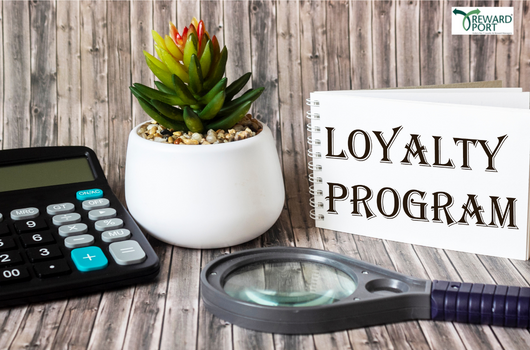
Running a channel partner program can be a faster way to capture new customers and expand the brand footprint. However, there are other benefits of a channel partner program that you need to consider. The first of these is retention. According to a 2015 study by Aberdeen Group, channel partners have a 17% higher customer retention rate than non-channel partners.
You should also consider the costs of acquisition versus retention. A customer you acquire through a channel partner is likely to offer a higher LTV than a direct customer.
With the constant proliferation of new marketing channels, it’s essential to work with partners in a collaborative way. Striking that balance between business growth and rewarding the channel partners can be challenging.
What is a channel partner loyalty program?
A channel partner loyalty program is a program designed to encourage loyalty among a company’s channel partners. Channel partners are companies or individuals that help promote and sell a company’s products or services.
Loyalty programs are a way to thank channel partners for their help and to incentivize them to continue working with the company. Typically, channel partner loyalty programs offer rewards points that can be redeemed for discounts, merchandise, or other prizes.
The goal of a channel partner loyalty program is to motivate partners to sell more of a company’s products or services, and to help build long-term relationships with its channel partners. By offering rewards and benefits, the program helps partners feel valued and appreciated, and encourages them to continue doing business with the company.

Why you need a channel partner loyalty program?
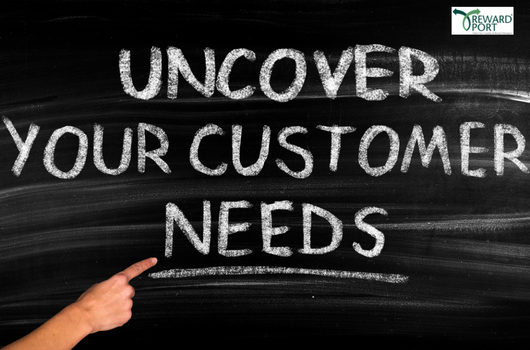
There are many reasons why you need a channel partner loyalty program. For one, it helps to build trust and loyalty among your channel partners. This, in turn, leads to improved communication and collaboration between you and your partners.
Additionally, a loyalty program can help to increase sales and grow your business. Channel partners who feel appreciated and valued are more likely to sell more of your products and services.
Finally, a loyalty program can help to improve your brand image and reputation. By offering rewards and incentives to your channel partners, you are showing that you value their business and are willing to invest in their success.
How to build a successful channel partner loyalty program?
A channel partner loyalty program can be a great way to build long-term relationships with your partners and keep them driving for growth. Here are a few tips for building a successful program:
1. Define your goals
What do you hope to accomplish with your program? More sales, more repeat business, more referrals? Make your objectives clear from the start.

2. Choose the right partners
Not all partners are created equal. Look for partners that share your values and are committed to your success.
3. Offer incentives that matter
Your partners are motivated by different things, so offer a variety of incentives that will appeal to different partners.
4. Communicate regularly
Keep your partners updated on your program and let them know how they can participate and benefit.
5. Be flexible
As your program grows, be open to making changes and adjustments based on feedback from your partners.
How to execute your channel partner loyalty program?
There are a few key things to keep in mind when executing a channel partner loyalty program:
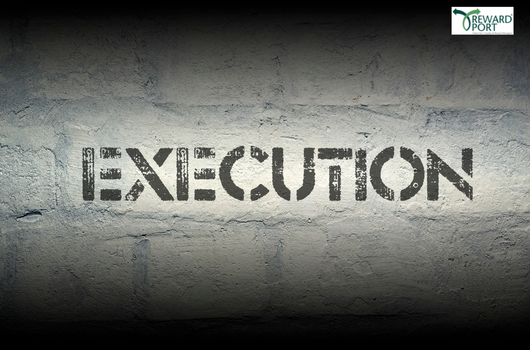
1. Keep it simple
The program should be easy to understand and easy to join.
2. Make it valuable
The program should offer partners something that they value, such as exclusive access to new products, early access to promotions, or increased margins.
3. Promote it
Make sure your partners are aware of the program and what they need to do to participate. Use email, social media, and face-to-face interactions to get the word out.
4. Be responsive
Be quick to answer any questions partners have about the program. This will make them feel appreciated and supported.
5. Celebrate successes
Be quick to answer any questions partners have about the program. This will make them feel appreciated and supported.
When partners reach certain milestones, make sure to celebrate their achievements. This will keep them motivated and engaged in the program.
Become the Pivot for Channel Partners
A channel partner loyalty program must solidify your partnerships, make them last longer, and reduce churn.
Building a channel partner loyalty program is not an easy task. There are several factors to consider before starting a program, and each channel partner and program will be different.
A loyalty program is not just a program that gives your customers rewards when they purchase your products. It’s more than that, it is a way to enhance your relationship and build trust with your customers.

Loyalty programs are a great way for companies to reward their customers for their continued patronage. Customers are usually enticed to participate in a loyalty program by the prospect of earning points, miles, or other types of rewards that can be redeemed for tangible prizes. These programs usually come with a set of rules that govern how and when rewards can be redeemed. The rules can vary from one loyalty program to the next and understanding those rules will help you determine the best time to launch a loyalty program.

